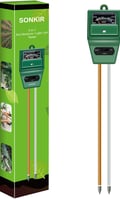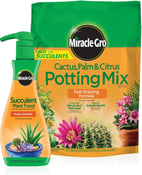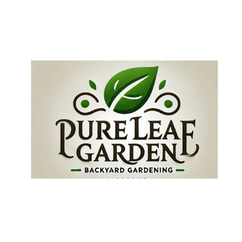Beautiful Flower Garden Design Tips
Discover essential tips on how to design a beautiful and functional flower garden. Learn effective flower gardening techniques to create a stunning outdoor space that thrives.
3/21/20256 min read
Understanding Your Space and Climate
Creating a beautiful and functional flower garden begins with a thorough evaluation of your specific space and its climate. One of the foremost steps in this assessment is understanding the amount of sunlight your garden receives throughout the day. Most flowering plants fall into three categories based on their sunlight needs: full sun, partial shade, and full shade. By observing your garden at different times, you can determine which areas receive adequate sunlight for the flowers you wish to plant.
In addition to sunlight, soil type plays a pivotal role in the success of your flower garden. Conducting a soil test can reveal the pH level and nutrient content of your soil, which can directly influence plant health. Some flowers thrive in sandy soils, while others prefer clay or loamy textures. Understanding these needs is essential for making informed decisions about which flowers will flourish in your garden.
Moreover, identifying your hardiness zone can greatly assist in selecting the right flowers. The U.S. Department of Agriculture (USDA) provides a hardiness zone map that classifies regions based on the average minimum winter temperatures. By knowing your zone, you can choose flowers that are well-suited for your climate, increasing their chances of thriving throughout the seasons.
Other factors to consider include drainage and existing landscaping elements. Flowers generally prefer well-drained soil; therefore, assessing drainage in your garden is vital, particularly in areas prone to water collecting after rainfall. Additionally, taking existing plants into account will help to create a harmonious garden environment. Understanding the interplay of sunlight, soil, and climate will ultimately empower you to make informed decisions in selecting and placing flowers, leading to a thriving garden that enhances your outdoor space.
Choosing the Right Flowers for Your Garden
Creating an aesthetically pleasing and functional flower garden begins with the selection of the right flowers, which must consider various factors including climate, bloom time, and color palettes. Different regions have distinct climates that can significantly influence which flowers thrive. For instance, those residing in arid zones may find that drought-resistant plants, such as succulents and ornamental grasses, are ideal, while individuals in more temperate areas might prefer a mix of annuals like marigolds and perennials such as coneflowers.
It is also essential to consider bloom time when choosing flowers for your garden. Some flowers bloom in spring, while others might only show their colors in summer or fall. Selecting a variety that staggers blooms across the growing season ensures an ever-changing landscape, engaging viewers throughout the year. As a result, an informed choice can transform your garden into a dynamic display of life and color.
Color palettes play a vital role in the overall aesthetic of your garden. When selecting flowers, consider not only the colors that appeal to you but also how those colors can complement one another. For example, vibrant reds and oranges may evoke energy, while softer pastels can create a tranquil atmosphere. Mixing various heights of plants also adds depth to a flower garden, making it visually appealing. Taller flowers like sunflowers can serve as a backdrop, framing shorter, more delicate blooms.
Moreover, companion planting is an excellent strategy for enhancing both the beauty and functionality of your garden. By grouping compatible plants together, you can promote pollinator attraction and reduce pest populations. Consider planting marigolds among your vegetables; their vibrant blooms deter pests while drawing beneficial insects that can help with pollination. With careful planning and selection, your flower garden can flourish into a harmonious environment, benefiting both its inhabitants and visiting wildlife.
Designing Your Flower Garden Layout
Creating a visually appealing and practical flower garden begins with a well-thought-out layout. The principles of garden design involve several key aspects, including spacing, layering, and grouping of plants. Proper spacing between flowers is crucial to ensure each plant has adequate room to grow, thrive, and receive sufficient sunlight. Typically, the recommended distance varies according to the species, but a general guideline is to follow the spacing suggestions indicated on plant labels to avoid overcrowding.
Layering is another vital element in garden design. This involves arranging flowers at different heights to create depth and visual interest. Taller plants should generally be placed at the back of the garden bed or central to a circular layout, with medium-height plants in the middle and shorter ones towards the front. This arrangement not only maximizes visibility but also highlights the unique characteristics of each species.
Grouping flowers in clusters can enhance their visual impact. This technique draws the eye and makes the garden appear more cohesive. It is advisable to use odd numbers for groupings, as they tend to look more natural and aesthetically pleasing. Incorporating focal points, such as a striking plant or decorative ornament, can also enhance the overall layout. Pathways within the garden serve multiple purposes: they provide access for maintenance, create a clear pathway for visitors, and offer a visual guide through the space.
Utilizing garden design software or sketching out plans can greatly aid in visualizing the layout before planting. These tools allow gardeners to experiment with design concepts, ensuring their layout meets both functional and aesthetic needs. Finally, adding functional elements like borders, edging, and seating areas can enhance usability while contributing to the overall beauty of the garden. Thoughtfully designed layouts offer not just beauty, but also create inviting spaces for relaxation and enjoyment of nature.
Maintaining Your Flower Garden for Lasting Beauty
Maintaining a flower garden is essential for achieving long-lasting beauty and vibrancy. Regular attention to various aspects of plant care can make a significant difference in the health and growth of your flowers. One of the most critical practices involves proper watering. Depending on the specific needs of your plants, you should ensure consistent moisture levels, adjusting for rain or drought conditions. Utilizing the technique of deep watering encourages roots to reach deeper into the soil, promoting stronger, more resilient plants.
Fertilizing your flower garden is another vital practice. Employing a balanced, slow-release fertilizer can provide essential nutrients throughout the growing season. It is recommended to test your soil beforehand to identify any specific nutrient deficiencies, enabling you to choose the most effective fertilizer. This proactive approach fosters not only flourishing blooms but also robust plant health, allowing for optimal growth and vitality.
Pruning and deadheading are additional key components of garden maintenance. Regularly removing spent flowers, known as deadheading, can stimulate further blooming, ensuring your garden remains vibrant. Pruning, particularly for perennial plants, helps shape the garden and encourages healthy growth by removing dead or diseased stems. Furthermore, seasonal maintenance is crucial; preparing your garden for each change in season can enhance its aesthetic appeal. For instance, mulching helps retain moisture and suppress weeds, a practice that can be particularly beneficial during the warmer months.
Effective pest management is vital to protect your flower garden from potential threats. Regular inspection of plants for signs of pests will allow for timely intervention. Integrating methods such as companion planting and utilizing natural repellents can reduce pest issues without harming beneficial insects. Lastly, consider rotating your plants or refreshing garden layouts periodically. This practice can rejuvenate the soil, improve crop yields, and maintain a dynamic and enjoyable floral display, ensuring that your garden remains a source of beauty and satisfaction for years to come.
Optimize Sunlight & Soil Conditions:
Group plants based on their sun and water needs.
Improve soil with compost for better drainage and nutrients.
Mulch to retain moisture and suppress weeds.
Soil pH Meter, MS02 3-in-1 Soil Moisture/Light/pH Tester Gardening Tool Kits for Plant Care, Great for Garden, Lawn, Farm, Indoor & Outdoor Use


Miracle-Gro Cactus, Palm & Citrus Potting Mix and Succulent Plant Food - Bundle of Potting Soil (8 qt.) and Liquid Plant Food (8 oz.) for Growing and Fertilizing Indoor Succulents


Calcined Clay Soil Bonsai Cactus Soil Additive for Succulent Plants


For a balanced and vibrant garden, mix different plant types:
Perennials (e.g., lavender, peonies) return year after year.
Annuals (e.g., petunias, marigolds) provide seasonal color.
Bulbs (e.g., tulips, daffodils) bloom in specific seasons for variety.
Before planting, sketch out a rough design. Consider:
Garden Shape & Size – Choose a layout that complements your yard.
Pathways & Borders – Define walkways for easy access and maintenance.
Focal Points – Add a bench, fountain, or a statement plant for visual interest.
gonicc 8" Professional Premium Titanium Bypass Pruning Shears


Sustainability
Eco-friendly supplies for nurturing your garden.
Cultivating
© 2025. All rights reserved.
